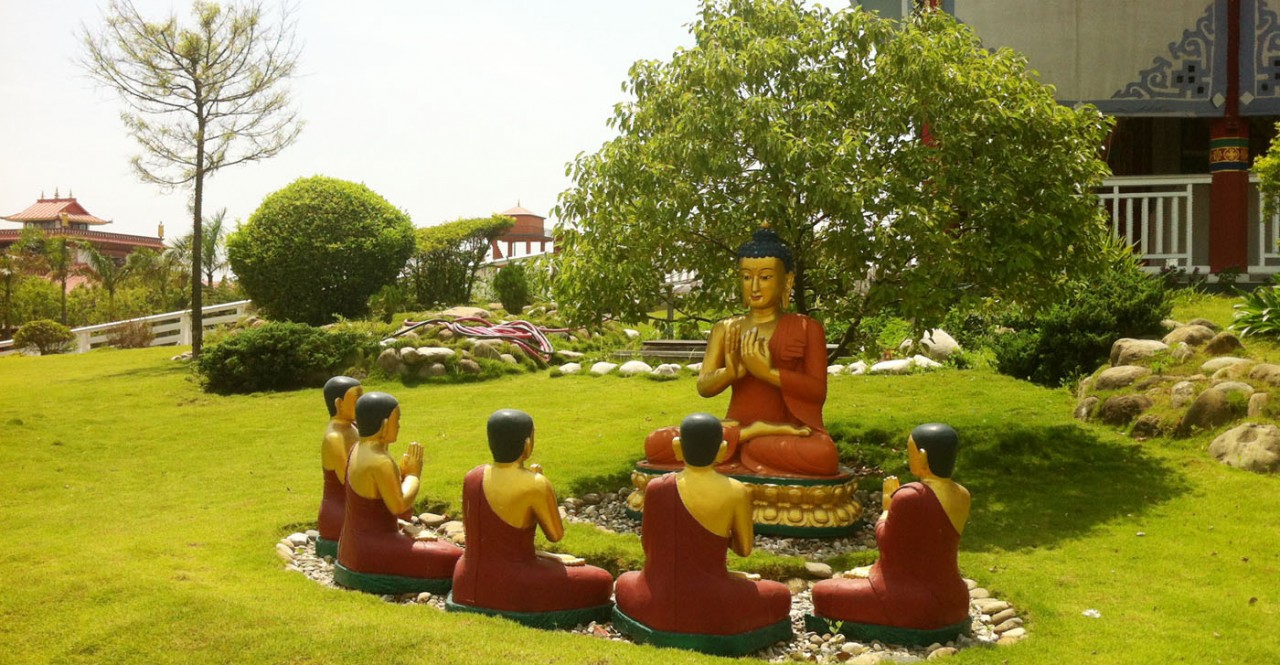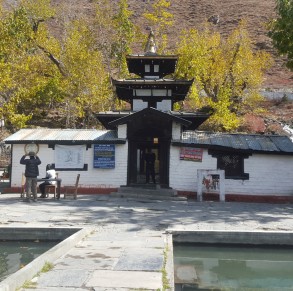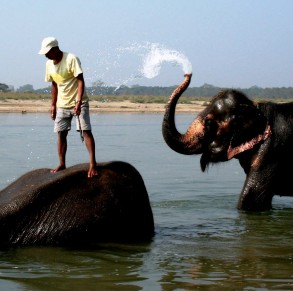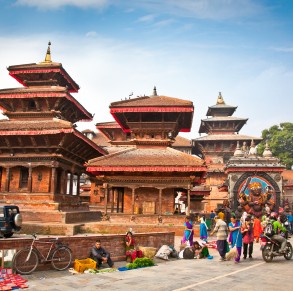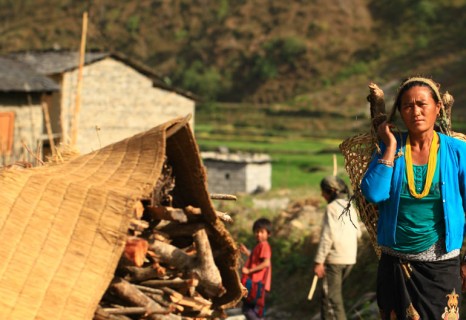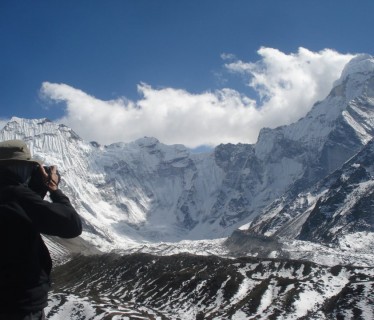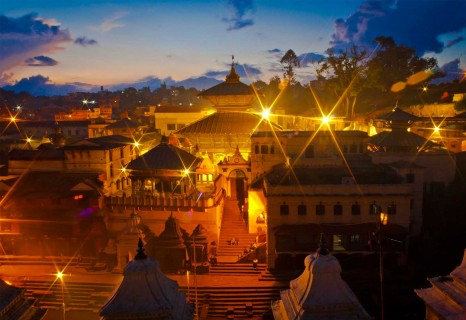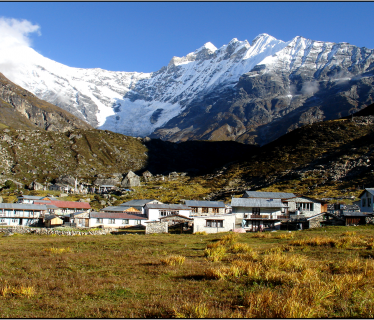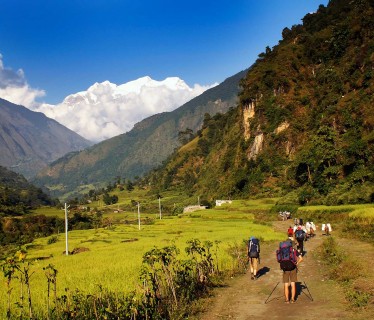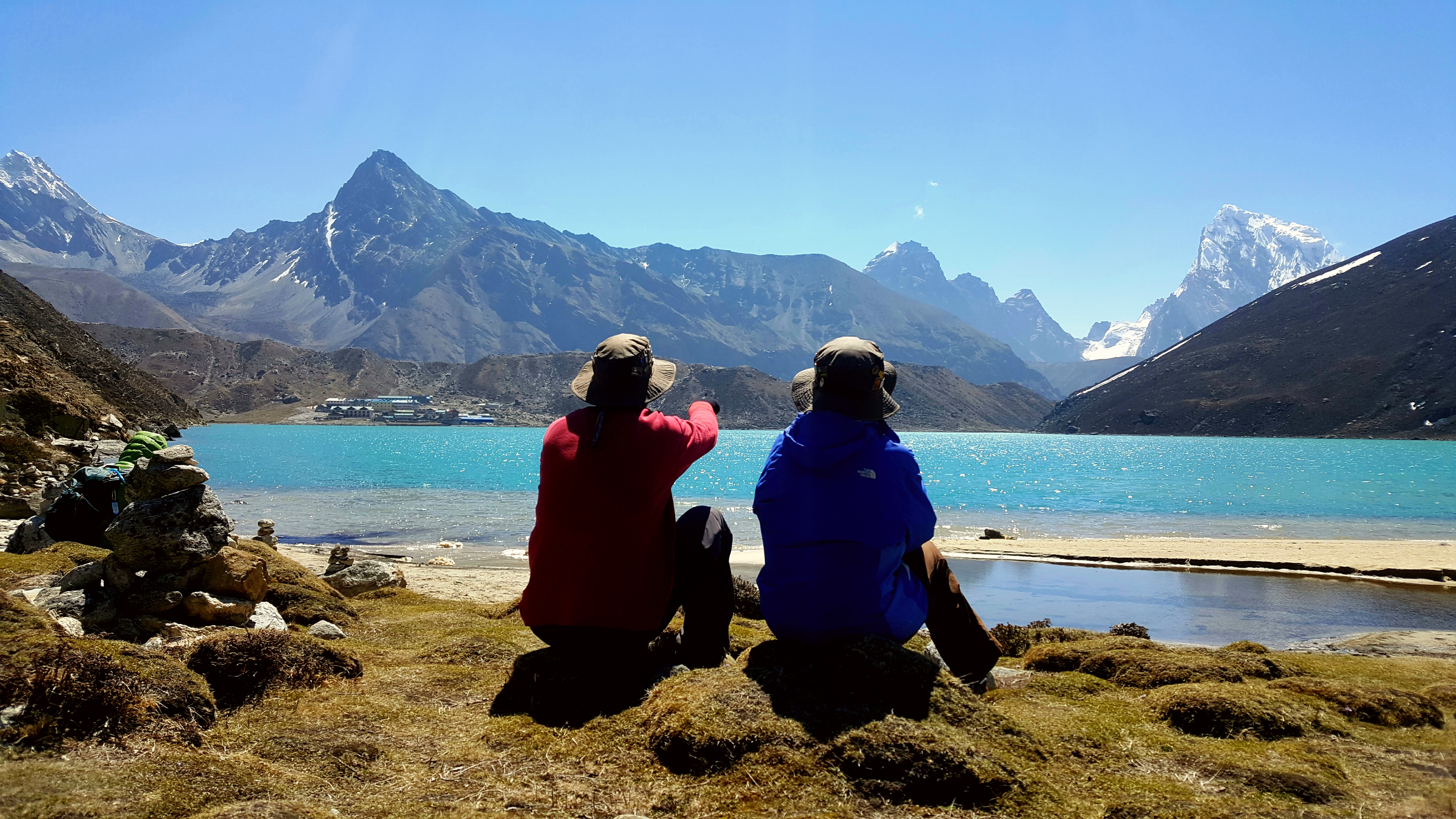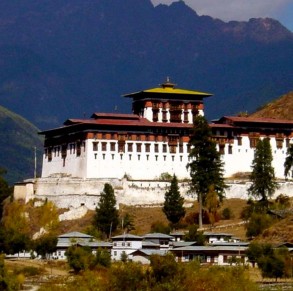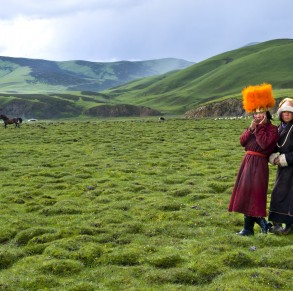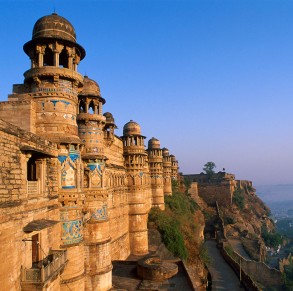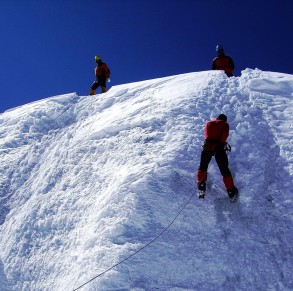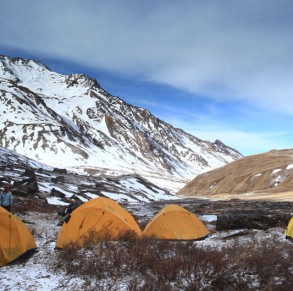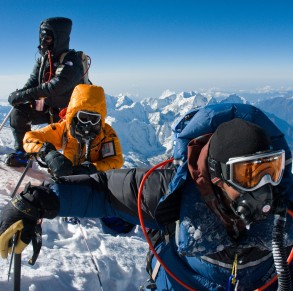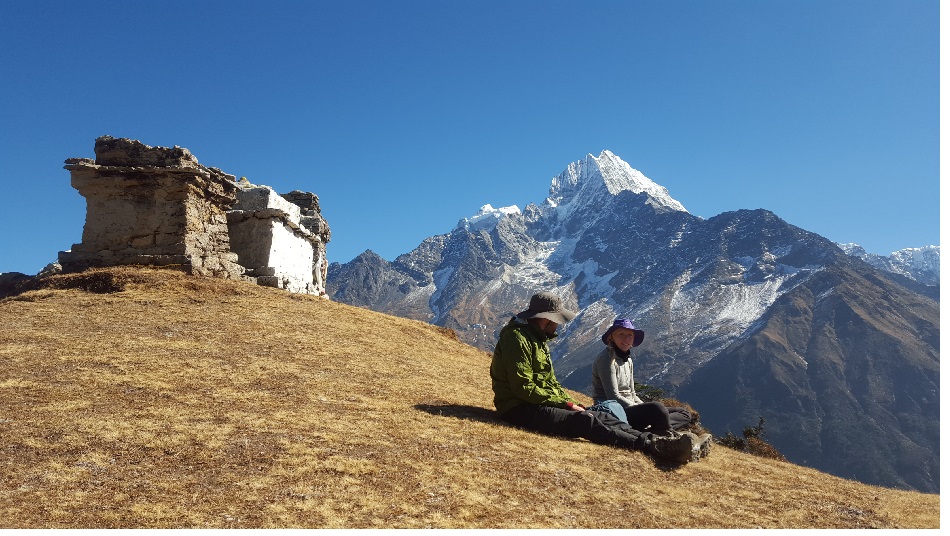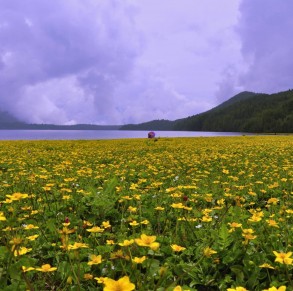Day 01: Arrival in Kathmandu
Day 02: Sightseeing in Kathmandu
Day 03: Transfer to Lumbini (205 km, 8-10 hours)
Day 04: Sightseeing of Lumbini and Kapilavastu
Day 05: Transfer from Lumbini via Sunauli to Kushinagar (165 km, 4 hours), sightseeing in Kushinagar
Day 06: Transfer to Patna (285 km, 8 hours)
Day 07: Transfer to Bodhgaya (110 km, 2 hours)
Day 08: Sightseeing in Bodhgaya
Day 09: Tour to Nalanda, overnight in Bodhgaya
Day 10: Transfer to Varanasi (255 km, 5 hrs)
Day 11: Visiting of Sarnath and back Varanasi
Day 12: Afternoon flight to Delhi
Day 13: Final Departure
Day 01: Arrival in Kathmandu
After your arrival in Kathmandu, a representative from Snow Leopard Trek will pick you up from the airport and drop you off at your hotel. There will be a group discussion followed by trip preparation during late afternoon at Snow Leopard Trek’s office. Overnight in Kathmandu.
Day 02: Sightseeing in Kathmandu
Today you visit some of the notable attractions from around Kathmandu valley with a guided tour to four of UNESCO World Heritage Sites. Kathmandu Durbar Square holds the palaces of the medieval Kings who ruled over the then Kathmandu Kingdom whereas Pashupatinath houses a sacred lingum, or the phallic symbol of Lord Shiva. The Aryaghat alongside Pashupati and on the banks of the Bagmati River is a famous funeral site for the Hindus. Next up is Buddhist shrine of Bouddhanath, one of the largest stupas in the world, and one of the holiest Buddhist pilgrimage and tourist destinations in Kathmandu. The area of Bouddhanath is also famous for over 50 Tibetan Gompas or monasteries. You tour for the day concludes with the visit of Swoyambhu temple. Swoyambhu meaning the “the self-existent” is popular among the foreigners as the ‘Monkey Temple’ owing to the large number of monkey population residing in the area. Overnight at Kathmandu.
Day 03: Transfer to Lumbini (205 km, 8-10 hours)
You start early and drive to Lumbini – about 205 km south-west from Kathmandu which will take about 8-10 hours. You leave the valley and enter the Terai plains whereby you can notice the sudden surge in the temperature as it gets hot and humid (except in winter). You then reach the legendary place where one of history’s greatest and most revered figure, Siddhartha Gautam was born. If you make it to Lumbini by evening or around sunset, you can stroll around the local market and observe the local lifestyle around there. Overnight at Lumbini.
Day 04: Sightseeing of Lumbini and Kapilavastu
The holy site of Lumbini, also enlisted within the list of UNESCO World Heritage Sites, holds immense archaeological and religious importance. It comprises of ruins of ancient monasteries, a sacred Bodhi Tree, an ancient bathing pond, the Ashok Pillar (erected by Emperor Ashoka in 249 BC on the spot of Buddha’s birth which also bears the oldest inscription of Nepal) and the Maya Devi temple. Maya Devi temple is the spiritual heart of Lumbini which marks the spot where Queen Maya Devi gave birth to Siddhartha Gautam. From early morning to early evening, pilgrims from various countries perform chanting and meditation at the site. You also visit the museum, peace pagoda and spend your day exploring the area and its temples, monuments and ancient sites soaking up the serene ambience.
From there you drive about 29 km west of Lumbini, and reach Tilaurakot, the historical site of Kapilavastu, where Siddhartha Gautam spent the first 29 years of his life. The site sits in a peaceful meadow on the banks of the Banganga River. The showy shrine nearby with several carved pachyderms is dedicated to Maya Devi. There’s a small museum at the final turn-off to Tilaurakot that displays some of the artefacts found at the site. After you’ve visited the place, you drive back to Lumbini. Overnight in Lumbini.
Day 05: Transfer from Lumbini via Sunauli to Kushinagar (165 km, 4 hours), sightseeing in Kushinagar
You drive from Lumbini towards Sunauli, the most popular tourist border crossing between Nepal and India and head towards Kushinagar. After nearly 4 hours drive you reach Kushinagar which is one of the four main pilgrimage sites marking Buddha’s life where Lord Buddha breathed his last. Here you can find several peaceful modern temples and stupas including three main historical sights: Ramabhar Stupa, Mahaparinirvana Temple and Mathakuar Temple. The half-ruined, 15m high Ramabhar Stupa is where Buddha’s body is said to have been cremated where monks and pilgrims can often be seen meditating and searching whereas Mahaparinirvana temple is well-known for its serene 5thcentury reclining Buddha, unearthed in 1876. It depicts Buddha on his ancient death-bed and is one of the world’s most moving Buddhist icons where scores of devotees pay homage and seek nirvana. Set among monastery ruins, Mathaukar Temple marks the spot where Buddha made his final sermon and now houses a 3m-tall blue-stone Buddha statue. Buddha museum, Tibetan temple, Japan-Sri Lanka Buddhist meditation centre are other notable attractions around here. Overnight in Kushinagar.
*Note: Multiple-entry visas are available at the immigration post just across the border. You will need two recent passport photos and USD. The border is open 24 hours but closes to vehicles at 10 pm.
Day 06: Transfer to Patna (285 km, 8 hours)
There are no direct flights or trains between Kushinagar to Patna. You will be taking a taxi from Kushinagar to Deoria then take Vaishali Express train (daily superfast train service) from Deoria to Sonepur. You will travel 2 Tier or 3 Tier AC Class where air condition, 2 tiers or 3 tiers of padded benches, clean sheet/pillow/blanket are provided. Carriage doors are locked at night (so people do not wander through the carriages) where you will have much more seating space during the day and be with higher class Indians who are generally more quiet and reserved. Once in Sonepur, you take a taxi from there and drive to Patna. Overnight in Patna.
Day 07: Transfer to Bodhgaya (110 km, 2 hours)
You board a taxi and travel to Bodhgaya from Patna which is almost 2 hours drive. Patna to Bodhgaya route encompasses of sights that gives away the true impression of India’s countryside. Once in Bodhgaya, you check in your respective hotel and rest for the day. You can stroll around the streets and local shops around Bodhgaya in the evening. Overnight in Bodhgaya.
Day 08: Sightseeing in Bodhgaya
Bodhgaya is the quintessence of Buddhist pilgrimage where Prince Gautam is believed to have attained enlightenment beneath a Bodhi tree and became Buddha. A beautiful temple in the garden setting marks the spot and a descendent of that original bodhi tree flourishes here, its roots embedded in the same soil as its celebrated ancestor. The exact spot is now marked by the magnificent Mahabodhi Temple (World Heritage Site), where Buddha attained enlightened and formulated his philosophy of life and now forms the spiritual heart of Bodhgaya. Topped by a 50m pyramidal spire, the ornate structure houses a 2m high gilded image of a seated Buddha.
Another major attraction is the towering 80 foot statue of Lord Buddha. Bodhgaya also has an Archaeological Museum displaying an interesting array of relics, scriptures, and ancient statues of Buddha. Many monasteries and temples dot the bucolic landscape built in their national styles by foreign Buddhist communities. Overnight in Bodhgaya.
Day 09: Tour to Nalanda, overnight in Bodhgaya
Today you visit the extensive ruins of the ancient centre for higher learning and an important Buddhist centre in Nalanda. You drive for about 2 hours in the morning and reach there. The Buddhist University of Nalanda, once the most prestigious centre of learning in Asia, continues to draw people from around the world. When Chinese scholar and traveller Xuan Zang visited sometime between 685 and 762 AD, 10,000 monks and students lived here studying theology, astronomy, metaphysics, medicine and philosophy. The red-brick ruins consist of nine monasteries and four main temples. Most impressive is the Great Stupa, with steps, terraces, a few intact votive stupas and monks’ cells. Across from the entrance is the archaeological museum housing the Nalanda University seal and a host of sculptures and bronzes unearthed from Nalanda and Rajgir. About 2km further on is the huge Xuan Zang Memorial Hall, built by the Chinese as a peace pagoda in honour of the famous Chinese traveller who studied and taught for some years at Nalanda. You return back to Bodhgaya in the evening. Overnight in Bodhgaya.
Day 10: Transfer to Varanasi (255 km, 5 hrs)
After breakfast, you take a taxi from Bodhgaya and travel overland for almost 5 hours to Varanasi, the City of Temples. Most of the journey is along the modern highway paralleling the old Grand Trunk Road, which is one of the better roads in India. You check in your hotel and rest for the day. You are free to stroll around the exotic and colorful city of Varanasi in the evening. Right from the ancient times, Varanasi has stood as a symbol of Hindu renaissance and preserved the rituals and tradition of Hindu philosophy. Overnight in Varanasi.
Day 11: Visiting of Sarnath and back Varanasi
Situated about 10 km from the holy city of Varanasi, you drive to Sarnath in the morning. Buddha came to Sarnath to preach his message of the middle way to nirvana after he achieved enlightenment at Bodhgaya and gave his famous first sermon here. Set in a peaceful park of monastery ruins is the impressive 34m Dhamekh stupa, which marks the spot where Buddha preached his first sermon. Nearby is a 3rd century BC Ashoka Pillar with an edict engraved on it. The large ruined Chaukhandi Stupa marks the spot where Buddha met his first disciples. Mulgandha Kuti Bihar where Buddha’s first sermon is chanted daily, deer park and archeological museum are other highlights from Sarnath. Drive back and overnight in Varanasi.
Day 12: Afternoon flight to Delhi
Your pilgrimage tour comes to a close as you head back to Delhi. You will be dropped at Varanasi airport by your trip leader. You fly for about one and half hour. Once in Delhi, a representative from Snow Leopard Trek will pick you up and take you to your hotel. You may stroll around the streets in Delhi, the capital city of India for some souvenir shopping. You may also visit popular tourist attractions nearby. in the evening. Overnight in Delhi.
Day 13: Final Departure
Your journey concludes today as you bid farewell to this exquisite land. You will be taken to the Delhi airport for your final departure.


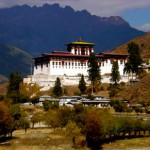
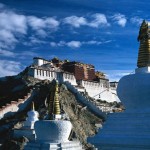
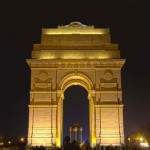

 English
English